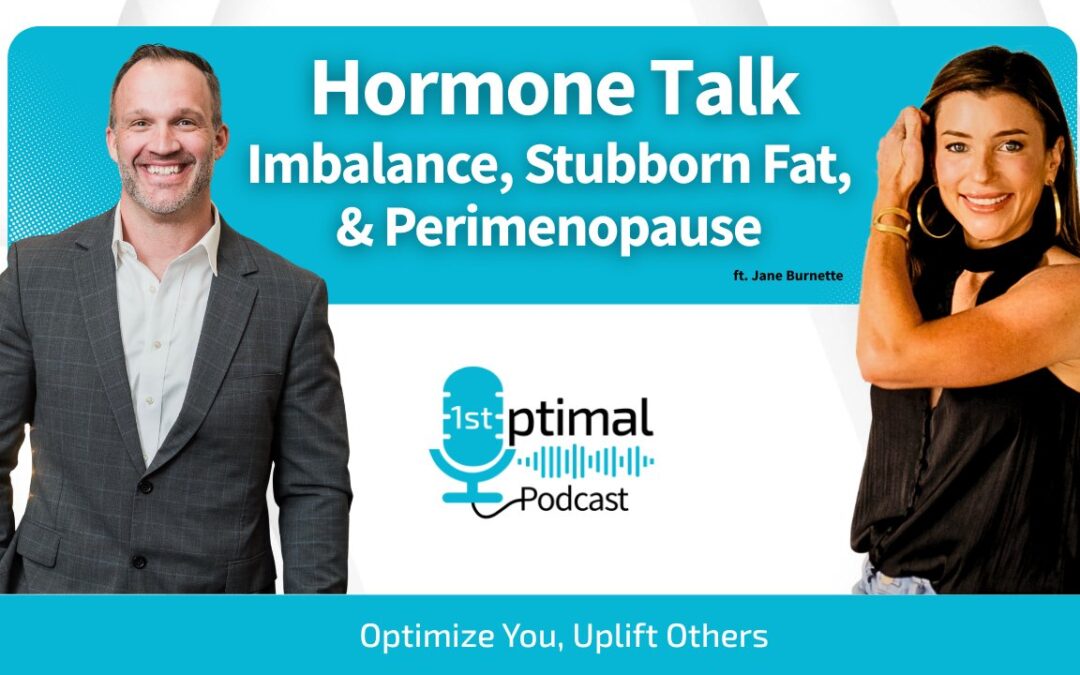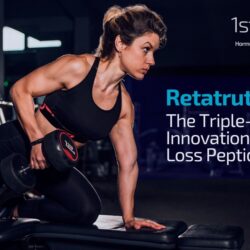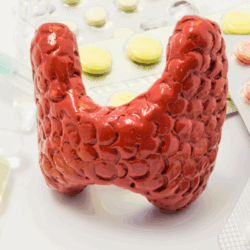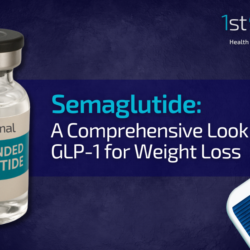Perimenopause isn’t just a phase for your late 40s; its first whispers can begin in your mid-to-late 30s. You might mistake the subtle signs—a little more fatigue, a bit of brain fog, a slight shift in your body composition—for professional burnout or stress. But these changes are often the first indicators of a hormonal transition. Pushing through them without understanding the cause can make the journey harder later on. Addressing the root issues now is the key to a smoother experience and effective perimenopause weight loss. This article will help you identify these early signals and provide a proactive, personalized roadmap for maintaining your vitality.
Reclaiming Health During Perimenopause and Menopause: A Smarter, Personalized Approach for Women Over 40
Perimenopause and menopause are not diagnoses—they’re natural transitions. But for many women, these phases come with unexpected and frustrating symptoms: stubborn weight gain, sleep disturbances, anxiety, low energy, and mood swings. The problem? Most conventional healthcare systems still treat these issues as inevitable signs of “aging,” leaving women underserved and underdiagnosed.
The good news is: you’re not alone—and there is a better way. Through advanced lab testing, targeted nutrition, and evidence-based hormone therapy, midlife can become a time of renewed strength, clarity, and energy.
This article breaks down the most common challenges women face in their 40s and 50s, along with powerful strategies used by functional health coaches and clinicians to overcome them.
Understanding the Real Obstacles: It’s Not Just Willpower
Many women struggling with weight gain during perimenopause say things like:
“But I don’t eat that much.”
This isn’t necessarily untrue—but it’s often incomplete. Research shows that individuals tend to underreport their caloric intake by 20–60%. In one study, participants claimed to consume 1,300 calories per day, but analysis revealed an actual intake of 2,400.
This isn’t about deception—it’s about physiology. Hormonal shifts, particularly elevated insulin and cortisol, can create powerful food cravings and subconscious snacking behaviors.
The Perimenopause Timeline: It Starts Earlier Than You Think
Many women associate perimenopause with their late 40s, but the transition often begins much sooner. The first hormonal shifts can appear in your mid-to-late 30s, with subtle symptoms that are easy to mistake for stress or burnout. According to UChicago Medicine, perimenopause symptoms can begin seven to ten years before menopause officially arrives. This means the unexplained fatigue, brain fog, or slight shift in your body composition could be the first signs of this new phase. For high-achieving women, it’s common to push through these feelings, attributing them to a demanding career or busy home life. However, understanding this timeline is the first step toward addressing the root cause instead of just managing the symptoms.
Metabolic Slowdown: The Role of Muscle Loss
If your trusted diet and exercise routine suddenly stops working, you’re not imagining things. A key factor at play is a natural decline in muscle mass, which is metabolically active tissue. As the Mayo Clinic notes, “As people age, they tend to lose muscle and gain fat. Less muscle means your body burns calories slower.” This metabolic slowdown means your body’s energy requirements change, making it easier to gain weight even if your habits haven’t. Instead of doubling down on cardio or further restricting calories, the focus needs to shift. Prioritizing strength training and adequate protein intake becomes essential not just for maintaining your physique, but for keeping your metabolism firing efficiently through this transition and beyond.
Beyond Diet: The Influence of Genetics and Stress
Weight management in midlife is more complex than just “calories in, calories out.” Your genetic blueprint plays a part, influencing where your body is predisposed to store fat. But an even bigger factor for many professional women is stress. The constant pressure of a demanding career and personal responsibilities can lead to chronically elevated cortisol levels. As functional medicine expert Dr. Jolene Brighten explains, “High stress leads to high cortisol, which can cause weight gain, especially around the belly.” This isn’t just a feeling; it’s a physiological response. Cortisol signals your body to store energy as visceral fat—the dangerous type that surrounds your organs—making stress management a non-negotiable part of any effective health strategy.
Psychological and Sociological Pressures
The internal battle is often compounded by external pressures. The expectation to maintain a certain appearance while juggling a career and family can create a cycle of stress and negative self-perception. Research confirms this connection, showing that women were more likely to gain weight if they were sedentary, stressed, and had a negative body image. This highlights how interconnected our mental and physical health truly are. When you feel defeated by the changes in your body, it can diminish your motivation to stay active or make nourishing food choices, which in turn reinforces those negative feelings. Acknowledging this psychological component is crucial for creating a sustainable, compassionate approach to your well-being.
The Health Risks of Midlife Weight Gain
While the aesthetic changes can be frustrating, the primary concern with midlife weight gain—especially around the abdomen—is its impact on long-term health. This isn’t about fitting into a certain size; it’s about protecting your future vitality. Gaining visceral fat significantly increases your risk for serious health conditions that can compromise your performance and longevity. According to UChicago Medicine, this type of weight gain is linked to a higher risk of diabetes, heart disease, high blood pressure, stroke, and even certain cancers. Understanding these risks reframes the goal from simply losing weight to proactively building a foundation for decades of optimal health, energy, and mental clarity.
Key Hormones That Disrupt Fat Loss
- Estrogen: As estrogen declines, women become more insulin-resistant, which makes fat storage (especially in the abdomen) more likely.
- Cortisol: Chronic stress elevates this hormone, promoting fat storage and disrupting sleep.
- Progesterone: Low progesterone can worsen sleep and mood, contributing to fatigue and emotional eating.
Why the Standard Calorie Approach Doesn’t Work for Midlife Women
Midlife women are often told: “Eat less. Move more.”
The problem? Many are already eating too little and exercising too much, creating a stress response that leads to plateaus, binges, and burnout.
Your Changing Calorie Needs
It’s a frustratingly common story: you’re eating and exercising the same way you have for years, but suddenly, the weight starts creeping on. This isn’t in your head—it’s a direct result of hormonal shifts during perimenopause. As estrogen levels decline, your body can become more insulin-resistant, which increases the likelihood of fat storage, particularly around your abdomen. At the same time, your metabolism is changing. We naturally lose muscle mass as we age, and since muscle burns more calories than fat, our overall metabolic rates slow down. This is why a generic “eat less” approach often backfires. Without understanding your specific hormonal profile through comprehensive testing, you’re essentially guessing. A personalized, data-driven strategy that accounts for your unique biology is the key to working with your body, not against it, and finally moving past the frustrating cycle of restriction and weight gain.
The Hidden Cost of Undereating:
- Protein Deficiency: Most women over 40 consume around 70g of protein per day—far below optimal for muscle maintenance and satiety.
- Low Energy Availability: Chronic calorie restriction can suppress metabolism and worsen hormonal imbalances.
- Stress Load: Overexercising while underfueling creates a cortisol-driven spiral that affects mood, sleep, and body composition.
Step One: Track for Education, Not Judgment
One of the most powerful tools for reversing this cycle is simple: track your food intake.
But not to punish yourself—track to educate yourself.
Food Tracking Tips:
- Start by logging just your protein intake.
- Set a goal of 30–40g of protein per meal.
- Use food scales and labels to better understand portion sizes.
- Reframe tracking as a learning tool—not a pass/fail system.
This small habit can dramatically improve self-awareness and lead to more sustainable changes.
Protein: The Natural Appetite Regulator
Protein isn’t just about muscles—it helps regulate hunger and supports fat loss by stimulating GLP-1 (Glucagon-like peptide-1), a hormone that promotes satiety and slows digestion.
GLP-1: A gut hormone that helps regulate appetite and insulin. Some popular weight loss medications mimic this effect.
For women not ready for medication, or those using it short-term, high-protein meals can support or enhance these natural mechanisms.
How Much Protein Do You Really Need?
If you’re like most women over 40, you’re probably not eating enough protein. The average intake is around 70 grams per day, which is significantly less than what’s needed to maintain muscle mass and manage hunger during the hormonal shifts of perimenopause. A better target, recommended by experts like Dr. Jolene Brighten, is to aim for 1 to 1.5 grams of protein per kilogram of your ideal body weight. For a 150-pound woman (about 68 kg), that’s roughly 68 to 102 grams of protein daily. Prioritizing protein helps preserve your metabolically active muscle tissue, which naturally declines with age and contributes to a slower metabolism.
Building a Perimenopause-Friendly Plate
Instead of focusing on restriction, let’s reframe your approach to food around abundance and quality. The most effective strategy is to build your meals around whole, real foods with an emphasis on plants. This isn’t about a rigid diet; it’s a sustainable way of eating that nourishes your body and supports hormonal balance. Think of your plate as a canvas for vibrant, nutrient-dense ingredients. Fill half of it with non-starchy vegetables like leafy greens, broccoli, and bell peppers. Then, dedicate a quarter to a high-quality protein source and the final quarter to fiber-rich carbohydrates like sweet potatoes or quinoa.
This structure ensures you get the protein needed for satiety, the fiber for gut health, and the phytonutrients from colorful plants to fight inflammation. Healthy fats from sources like avocado, olive oil, and nuts are also crucial for hormone production and keeping you full. While these guidelines are a powerful starting point, a truly optimized plan considers your unique biochemistry. At 1st Optimal, we use comprehensive lab testing to understand your specific nutrient needs, food sensitivities, and metabolic health, allowing for a nutrition strategy that is fully personalized to you. This data-driven approach removes the guesswork, helping you build a plate that works for your body.
The Power of Fiber for Gut Health and Satiety
Fiber is one of the most underrated tools for managing perimenopausal weight gain. It works in two key ways: it helps you feel full, which naturally reduces overall calorie intake, and it feeds the beneficial bacteria in your gut. A healthy gut microbiome is essential for more than just digestion; it plays a critical role in regulating your weight, mood, and even estrogen levels. As Midi Health notes, a high-fiber diet supports the good bacteria linked to a healthy weight. Aim for at least 25-30 grams of fiber per day from sources like berries, lentils, chia seeds, and leafy greens.
Helpful Eating Patterns: Mediterranean and Plant-Based Diets
Rather than adopting a short-term, restrictive diet, consider shifting toward a sustainable eating pattern. The Mediterranean diet is an excellent model, emphasizing whole foods, lean proteins, healthy fats, and an abundance of plants. It’s naturally rich in nutrients, fiber, and antioxidants while limiting the processed foods, sugar, and unhealthy fats that can worsen menopausal symptoms. Similarly, a plant-forward approach, which prioritizes plants without necessarily eliminating animal products, can also provide significant benefits. The goal is to choose a pattern that feels enjoyable and easy to maintain long-term.
Considering Intermittent Fasting
Intermittent fasting (IF) can be a useful strategy for improving how your body responds to insulin and for reducing stubborn belly fat. The most common approach involves a daily 12 to 16-hour fasting window—for example, finishing dinner by 7 p.m. and not eating again until 9 a.m. the next day. This gives your digestive system a rest and can help your body become more efficient at using fat for fuel. However, IF is not a one-size-fits-all solution. For women dealing with high stress or adrenal fatigue, extended fasting can sometimes do more harm than good. It’s best to start slowly and pay close attention to how your body responds.
Foods and Drinks to Limit
Just as important as what you add to your diet is what you choose to reduce. Highly processed foods, sugary drinks, and snacks high in refined sugar, salt, and unhealthy fats can drive inflammation, disrupt blood sugar, and contribute to weight gain. According to the Mayo Clinic, limiting these foods is a key step in managing midlife weight changes. Alcohol is another one to be mindful of, as it can disrupt sleep, trigger hot flashes, and add empty calories. You don’t have to eliminate these things entirely, but being intentional about reducing them creates more room for the nutrient-dense foods that will help you feel your best.
Steps Over Sweat: The Underrated Fat Loss Strategy
When energy is low, intense workouts aren’t always realistic. Enter: walking.
Why Steps Matter:
- They increase NEAT (Non-Exercise Activity Thermogenesis)—your biggest source of calorie burn outside workouts.
- They reduce cortisol and improve insulin sensitivity.
- They’re easy to track and scale.
Getting Started:
- Track your baseline (use a smartwatch or pedometer).
- Add 1,000 steps to your current average.
- Use micro-walks (5–10 minutes after meals) to improve blood sugar.
Even without formal workouts, increasing daily steps can drive significant improvements in fat loss, mood, and sleep.
A Balanced Approach to Weekly Movement
While increasing your daily steps is a fantastic starting point, building a resilient body for the long haul requires a more structured approach. Think of movement as a balanced portfolio; you need different assets to protect against various risks. For women in perimenopause and menopause, this means combining activities that build strength, improve metabolic health, and reduce stress. The goal isn’t to spend hours in the gym but to move with intention, choosing exercises that directly counteract the hormonal and metabolic shifts you’re experiencing. This strategic approach ensures you get the maximum benefit for your time and energy, supporting everything from bone density to mental clarity.
Incorporating Strength Training and HIIT
If you do only one type of formal exercise, make it strength training. As estrogen declines, we lose muscle mass more easily, which slows our metabolism and weakens our bones. Lifting weights (or using your body weight) at least twice a week is the most effective way to combat this. It tells your body to hold onto and build precious, metabolically active muscle. For a time-efficient metabolic workout, add High-Intensity Interval Training (HIIT) once or twice a week. These short bursts of intense effort followed by brief recovery periods can significantly improve how your body uses insulin and sugar, which is crucial for preventing abdominal weight gain.
The Importance of Flexibility and Balance
Intense workouts are only one part of the equation. To manage the stress that often accompanies this life stage, it’s essential to incorporate restorative practices. Activities like yoga and stretching help lower cortisol, improve flexibility, and can even ease symptoms like hot flashes. Don’t overlook balance work, either. Simple exercises like standing on one foot or practicing tai chi are incredibly valuable for preventing falls and maintaining stability as you age. A well-rounded routine addresses not just the challenges of today, like menopause weight gain, but also sets you up for a healthier, more active future.
When Hormones Need a Helping Hand
Even with great habits, some women still struggle. That’s when hormone replacement therapy (HRT) may become necessary.
Common Hormones Used in HRT:
- Estrogen: Helps with hot flashes, mood, memory, and metabolic health.
- Progesterone: Supports sleep, reduces anxiety, and balances estrogen.
- Thyroid Hormones: Optimize energy, mood, and weight when hypothyroidism is present.
All hormone therapy should be guided by comprehensive lab testing and medical oversight.
Debunking the Fear of HRT
Much of the fear around HRT stems from the Women’s Health Initiative (WHI) study published in 2002, which linked HRT to increased breast cancer risk. However:
- The women studied were, on average, 10 years post-menopausal with pre-existing conditions.
- The estrogen-only group had a 23% lower breast cancer risk.
- The combined estrogen-progestin group showed less than one additional case per 1,000 women per year—not statistically significant.
Modern, bioidentical hormone therapy—especially when started early—has been shown to support brain health, bone density, metabolic health, and quality of life.
How Hormone Therapy Impacts Body Composition
While hormone therapy is most known for relieving symptoms like hot flashes and night sweats, it can also play a supportive role in managing your body composition. As estrogen levels decline, your body’s tendency to store fat shifts, often leading to more accumulation around the abdomen. According to the Mayo Clinic, hormone therapy may help counteract this change, encouraging a more favorable fat distribution. It also significantly improves sleep quality for many women. Better sleep reduces cortisol, lowers cravings, and provides the energy needed to stick with healthy eating and exercise habits, creating a positive feedback loop that supports your overall wellness goals.
Beyond Diet and Exercise: Supplements and Medical Support
When you’re doing everything right—eating well, moving your body, managing stress—and still not seeing results, it can feel incredibly defeating. This is where a more targeted strategy becomes essential. Most women experience some weight gain during midlife, but it’s not something you simply have to accept. The hormonal shifts during this time, especially the drop in estrogen, fundamentally alter how your body processes calories and stores fat. This is why a personalized approach that goes beyond the basics is so effective. Strategic supplementation and medical support can provide the missing pieces, helping to rebalance your system from the inside out and making your lifestyle efforts far more effective.
This isn’t about finding a magic pill, but about using data-driven tools to address the root causes of your symptoms. For high-performing women, time and energy are precious resources. Instead of guessing, a functional medicine approach uses comprehensive lab testing to identify specific deficiencies and imbalances. This allows for a precise plan—whether that involves targeted supplements, bioidentical hormones, or other medical therapies—that is tailored to your unique physiology. By working with your body instead of against it, you can finally break through plateaus and reclaim your vitality, focus, and strength for the long term.
Helpful Supplements for Perimenopause
While a food-first approach is always the best foundation, supplements can be incredibly useful for filling nutritional gaps and addressing specific challenges of perimenopause. Think of them as targeted support systems that help your body function optimally when hormonal fluctuations throw things off balance. For example, certain nutrients can directly impact sleep, mood, and metabolism—three areas that are often disrupted during this transition and have a major effect on body composition. The key is to be strategic, choosing high-quality supplements that address your specific needs, which are best identified through comprehensive testing and professional guidance.
Magnesium, Omega-3s, and Probiotics
Three foundational supplements can make a world of difference. Magnesium is essential for relaxation and sleep; it helps regulate neurotransmitters and supports the production of melatonin, the sleep hormone. Since poor sleep is a known driver of weight gain, improving your rest can have a powerful downstream effect. Omega-3 fatty acids, found in fish oil, are potent anti-inflammatories that support heart health and may help improve body composition. Finally, probiotics support a healthy gut microbiome. A balanced gut is linked to better mood and reduced anxiety, making it easier to maintain the healthy habits that are crucial for managing your weight and overall well-being.
Berberine and Creatine
For more targeted support, two other supplements stand out. Berberine, a compound extracted from several different plants, has been shown to help lower blood sugar and cholesterol levels. Some studies suggest it can be a useful tool for weight management by improving insulin sensitivity. Creatine is another powerhouse, especially for active women. It’s well-known for its ability to help build muscle and strength, which is critical for maintaining a healthy metabolism as you age. Beyond physical performance, emerging research also indicates creatine may support mood and cognitive function, helping you stay sharp and resilient.
Choosing Quality Supplements: The Importance of Third-Party Testing
The supplement market is largely unregulated, which means quality can vary dramatically. To ensure you’re getting a safe and effective product, always choose supplements that have been third-party tested. This means an independent organization has verified that the product contains what it claims on the label, in the correct amounts, and is free from harmful contaminants. Look for seals from organizations like NSF International, USP, or ConsumerLab.com on the packaging. Investing in high-quality, verified supplements is a non-negotiable part of a smart health strategy. It ensures your efforts aren’t wasted on impure or ineffective products and protects your health in the long run.
Understanding GLP-1 Medications
You may have heard about GLP-1 medications, a class of drugs that have become a popular and effective tool for weight loss. GLP-1 (glucagon-like peptide-1) is a natural gut hormone that your body releases after you eat. It helps regulate appetite by signaling fullness to your brain, slows down stomach emptying, and supports healthy insulin levels. Prescription medications like semaglutide and tirzepatide work by mimicking this hormone, making them a powerful option for individuals who struggle with insulin resistance and persistent weight gain. These are not over-the-counter solutions; they are prescription therapies that require careful medical oversight within a medically guided weight loss program to ensure they are used safely and effectively as part of a comprehensive health plan.
Testing Is Everything: Why Lab Data Drives Results
Guesswork won’t solve complex hormonal issues. That’s why comprehensive bloodwork is critical.
Key Labs to Consider:
- Full thyroid panel (TSH, Free T3, Free T4, Reverse T3, Antibodies)
- Sex hormones (Estradiol, Progesterone, Testosterone, DHEA)
- Insulin and A1C (for blood sugar regulation)
- Cortisol (for stress response)
- GI MAP Test (gut health)
- Food Sensitivity Testing (to uncover inflammation triggers)
At 1st Optimal, clients can receive medical-grade testing with a physician-led review. Whether you’re already working with a coach or need a full support team, the combination of data and personalization is game-changing.
The Mental Game: Embrace the Process, Not Perfection
Perimenopausal and menopausal transitions can leave many women feeling defeated. But the truth is: you’re not lazy. You’re not broken. You’re just missing the right tools and support.
Top Mindset Shifts That Empower Change:
- Focus on wins: Celebrate daily victories, no matter how small.
- Avoid all-or-nothing thinking: Progress beats perfection.
- Embrace friction: Doing hard things builds motivation “muscle.”
- Outsource when needed: There’s strength in asking for help.
Building Your Support System
You don’t have to go through this transition alone. In fact, women with a strong support network tend to manage symptoms better and maintain a more positive outlook. Lean on friends and family who support your healthy habits, or better yet, invite them to join you in a new fitness class or recipe experiment. Sharing the journey creates mutual accountability and makes the process more enjoyable. This connection also provides a powerful buffer against stress, which is crucial for managing cortisol levels, weight, and mood during perimenopause.
Your support system should also include professional guidance. While friends offer encouragement, a medical team provides the data-driven strategy and accountability needed for real, lasting change. This is where a functional medicine approach becomes invaluable. Instead of following generic advice, you get a plan tailored to your unique biology. At 1st Optimal, we partner with you, using comprehensive lab testing and personalized protocols to address the root causes of your symptoms. Having an expert team in your corner means you can stop guessing and start making informed decisions that truly move the needle on your health and performance.
Next Steps: Start With Your Labs
If you’re a woman over 40 and tired of fighting your body, it’s time to stop guessing and start testing.
✅ Identify hormonal imbalances
✅ Discover root causes like inflammation or gut dysfunction
✅ Get expert guidance on HRT, GLP-1 options, and nutrition
🎙 Enjoyed this conversation with Coach Jane Brunette?
At 1st Optimal, we provide comprehensive blood testing, performance-driven health plans, and personalized recovery support to help you optimize your health and uplift others around you.
👉 Ready to take control of your energy, strength, and recovery?
📅 Book Your Free Discovery Call: 1stOptimal.com
📞 Call Us: (816) 744-6814
📧 Email: membersupport@1stoptimal.com
🔗 Listen to the full episode on your favorite platform:
🎧 Spotify | Apple Podcasts | Amazon Music | Google Podcasts
📺 Watch it on YouTube: YouTube.com/@1stOptimal
Optimize You. Uplift Others
Frequently Asked Questions
Why did my usual diet and exercise routine suddenly stop working in my 40s? It’s a frustratingly common experience, and it’s not because you’ve lost willpower. As your hormones, particularly estrogen, begin to decline, your body’s entire operating system changes. This shift can make you more resistant to insulin, which encourages fat storage, especially around your midsection. You also naturally start to lose metabolically active muscle mass, which slows your metabolism. The strategies that worked in your 20s and 30s are simply no longer matched to your current biology, which is why a new, more targeted approach is necessary.
I’m overwhelmed. What’s the most impactful first step I can take without completely overhauling my life? Start by focusing on two simple things: protein and walking. Aim to include a solid source of protein, about the size of your palm, with every meal. This will help you feel fuller longer and protect your muscle mass. Then, add more steps to your day, even if it’s just a 10-minute walk after lunch and dinner. These small, consistent actions can significantly improve your blood sugar control and energy levels without requiring a huge time commitment.
How do I know if my symptoms are from stress, perimenopause, or something else? This is the critical question, because symptoms like fatigue, brain fog, and weight gain overlap across many conditions. The only way to know for sure is to look at the data. Comprehensive lab testing gives you a clear picture of what’s happening with your sex hormones, thyroid, cortisol levels, and blood sugar. This information removes the guesswork, allowing you to address the true root cause instead of just chasing symptoms.
I thought protein was just for bodybuilders. Why is it so important for women in perimenopause? Protein is the single most important nutrient during this transition. It does much more than build muscle. Eating enough protein helps regulate your appetite by stimulating gut hormones that signal fullness to your brain. It also provides the building blocks to preserve your muscle tissue, which is your metabolic engine. Maintaining muscle is one of the most effective ways to counteract the metabolic slowdown that happens during perimenopause.
Is hormone therapy (HRT) the only real solution for managing these changes? Hormone therapy can be a game-changer for many women, especially for managing symptoms like hot flashes and protecting bone health. However, it’s not the only tool, nor is it always the first step. A strong foundation of nutrition, strength training, and stress management can resolve many issues on its own. For others, HRT works best when combined with these lifestyle strategies. The right path is entirely unique to you and is best determined after a thorough evaluation of your labs and health goals.
Key Takeaways
- Reframe the Challenge: Midlife weight gain isn’t a willpower issue; it’s a biological response to hormonal shifts like declining estrogen and rising cortisol. Shifting your perspective from self-blame to strategic problem-solving is the key to making progress.
- Build, Don’t Just Burn: Move away from restrictive diets and excessive cardio. Instead, focus on building a resilient body by prioritizing strength training to maintain your metabolism and eating 30-40 grams of protein per meal to control hunger.
- Get Data-Driven Answers: Stop guessing what your body needs. Comprehensive lab testing provides a clear roadmap by identifying specific hormonal imbalances, allowing for a personalized plan that makes your lifestyle efforts far more effective.






